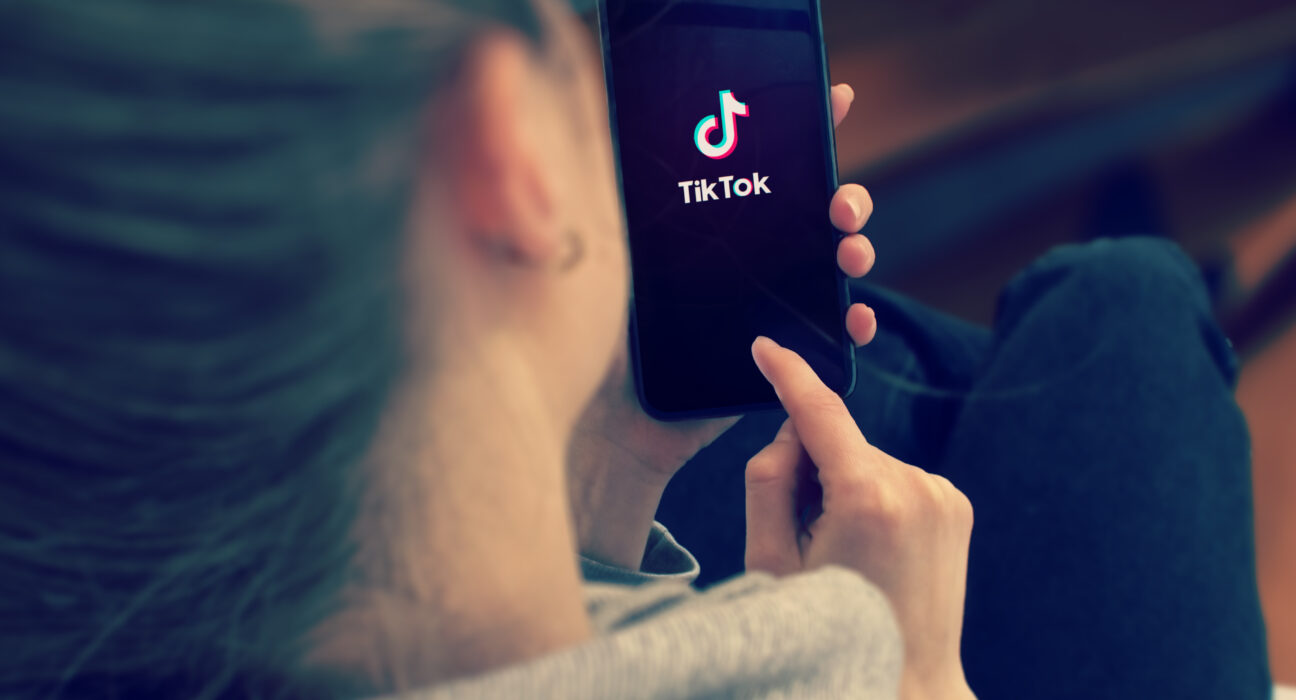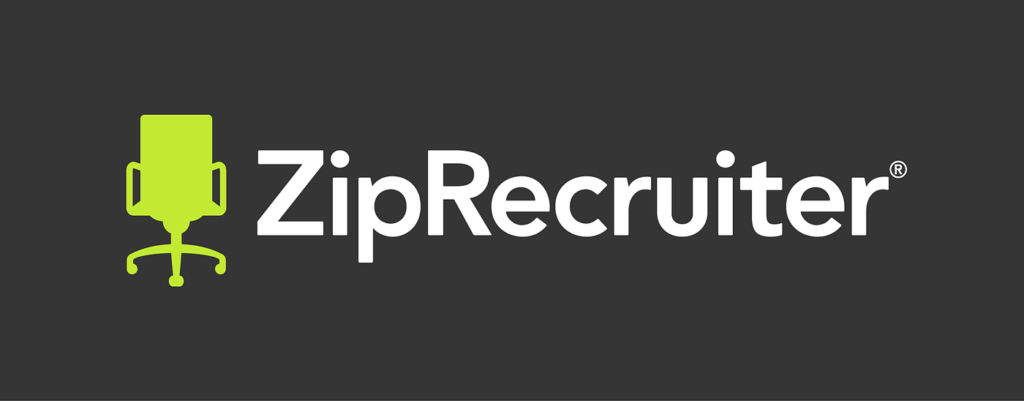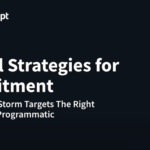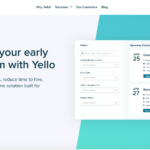Measuring Recruiting Success Using TikTok

TikTok Emerges as a Game-Changer in Recruitment
With a growing preference for visual content over text, TikTok is steadily dethroning Google as a recruitment powerhouse. A significant 40% of Generation Z now favors TikTok over Google for their search needs. By incorporating hyper-targeted video ads into your recruitment channels, you open the door to a fresh pool of potential candidates while achieving your hiring goals with ease.
Join Work it Daily in this insightful webinar, where we delve into TikTok strategies that not only significantly reduce your hiring costs but also slash your time-to-hire:
- Identifying the most effective job roles for precisely targeting your desired audience.
- Unveiling the video formats that wield the most considerable impact.
- Exploring best practices for gauging and measuring your recruitment campaign’s success.
- Taking a closer look at the potential implications of a TikTok ban in the United States.
Join Work It Daily’s JT O’donnell talk about how they are leveraging TikTok for recruitment talent. Here is a transcription of the webinar below:
Title: Measuring Recruiting Success Using TikTok In 2023
Speakers:
JT O’Donnell
Brad DiPaolo
JT:
Hey everyone. Welcome back to another Recruiter Table Talk. I’m JT O’Donnell, and I am so excited to be talking to Brad DiPaolo. Bradley, I’m not even going to say it right now. I’m trying to say your full name. I can first of all call you Brad instead of Bradley. Right?
Brad:
Absolutely.
JT:
That’s fair. We should bring you up onto the stage so everybody can see you. And oh, see, you even put just Brad, you didn’t even put your full name or your company name. Look at that.
Brad:
No.
JT:
That’s not helping people at all. So I’m just going to stop there because I’m really excited to talk about tracking and recruiting and TikTok and using trackable links with your TikTok in order to measure recruiting success with you. But in order to do that, I’m just going to let you introduce yourself because you have a very cool journey to where you are now. So take it away, my friend
Brad:
There, look, I added mine.
JT:
There. Much better. Much better.
Brad:
And I won’t put Bradley, because then I’ll feel like I’m in trouble.
JT:
I know. I can’t believe I was going to call you that. It’s kind of embarrassing.
Brad:
So I really appreciate you having me on to join you for this conversation. I know it’s going to be extremely exciting. And welcome, everybody. And please ask any questions you have along the way. I have 20 years of experience in sales and marketing and recruitment and I worked in recruitment and retail and kind of in and out of sales and marketing and recruitment throughout my career. And spent six years working in an agency world doing contingency recruiting—a life I will never, ever go back to. And I just knew that there had to be sort of something better, a better way to do things. And when the pandemic hit, it sort of gave all of us in talent acquisition a chance to take a breath. And so I talked to a lot of recruiters and just the overwhelming theme of what they wanted, what they were missing, what they needed was they just wanted qualified candidates in their inbox every day. And so I got to thinking, we do this for salespeople in B2B and B2C. And so we started thinking about how can we do this in talent acquisition. And my vision is to bring that sort of personal consumer experience that you have when you’re shopping online. Amazon can make buying duct tape personal. How can we not be doing this in talent acquisition? So our focus at CandidateHub is really about capturing the data of who’s engaging with your content so that we know who’s serious, who’s tire kickers, who’s ready to be hired; and deliver personalized content along the journey to get them there to help them to convert. So they say only 92% of people who visit career sites leave without applying. So we want to impact that application completion ratio, if that’s the way you want to call it. And it all starts really with gathering data and offering personalized experience along the way.
JT:
Yeah. And it’s really exciting. Because I think our industry is always so far behind with this stuff in terms of what’s available; that remarketing aspect of it. And I love that you brought up that stat because I left the staffing and recruiting industry, corporate America, 20 years ago to flip to the other side, become an advocate for the worker, and have built a business model around serving job seekers or who we now call job shoppers, which I think is what, when you and I first met just immediately, we started talking about this idea that they really do shop for a job now; they don’t land on there and take a look at your site for three minutes and apply. They’re there, they take a look, they go do other research, maybe they come back to it. There’s a journey before they get to the place where they’re shopped and selected you as the employer they want to apply to.
Brad:
Yeah. And we’re seeing that, on average, it’s almost three times with our clients, that people are coming back to the career site before they apply. And we’ve seen as high as 10, even 16 times that people have come back to career sites. And the way I equate it really is it’s like buying a house or buying a car. You don’t do it on a whim unless you’re Mike Tyson and you’re a millionaire, like the story of him buying a car because he was tired of driving the stick. But most people are shopping, they’re exploring, they’re checking their options, they’re in the driver’s seat today. And so they’re really looking things over and checking out everything that has to do with an organization and engaging with content across multiple channels to learn everything they can about an organization before they apply.
JT:
Well, and that’s the thing that I’ve been trying to tell employers. Because we work with the B2B side and what we say to them is, you want them doing that research, and if you’re using a tool like CandidateHub, you could start to track not only how many times they engage with your data before they applied, but what specific data, what specific sites or resources or pieces of content they engage with, and look for the patterns. And I think that’s where that gets exciting, because to your point, we can start to figure out what is converting them, which particular pieces of content, which things are they learning about the organization that are creating that tipping point where they’re actually going ahead and applying, so that we can then go recreate that, drive the traffic through that funnel process, which I love, as you talked about that. And I was hoping before we get into the subject of TikTok, if you could just say, one, it’s multiple touchpoints, which we think is a good thing; but two, is there certain types of activities that you see people doing that seems to more than likely lead to them actually applying? Are there certain things that you’re now recognizing through the data collection you’re doing?
Brad:
That’s a great question. I think it’s really about providing them with the value that they are looking for. And really, it comes down to what your culture is like, and the people that are in your organization. And so they do have lots of options. And so what we’re seeing is when they’re able to find content that resonates with them, in terms of, these are the types of people that I’m going to be working with—and it’s not even so much about the perks, I don’t think. The benefits and all that stuff, those are important and those will be flushed out, but it’s really they need to be assured that I’m going to fit in this culture. And candidates are doing a much better job of self-selecting out, which I actually really like to see. I really like to see that. I would rather have 10 candidates that are qualified that are the right fit, than 80 candidates that are all the wrong fit. Let’s give them the opportunity to self-select out. So they really want to see—when they stumble on that content that’s giving them what they want. And really, a lot of people leading into our conversation today, love video.
JT:
Yeah, exactly, which is where I was going with that in hopes that video must be a trigger point for that, because they can say, oh, I identify with that person, like you said. And I think we keep talking about work smarter, not harder. Such an overused phrase. But in recruiting, my goodness, you don’t need a thousand applicants. That’s a thousand applicants to look through. That’s 999 who you’re going to have to reject in some way. We’ve got to stop thinking that more is better in recruiting. And that’s why I got really excited about your platform, because this is intelligent decision making and an ability to test and test and test until you can really dial in, like you said; and know that those 10 candidates, maybe eight or nine of them are going to be somebody you want to keep in the talent pool and nurture through and could very well be a good fit for the company. That’s just a better candidate experience. It’s more cost effective for the organization doing the recruiting. I just can’t believe we’re not there yet, but we’re getting there. We’re getting there with tools like yours. And I think video, like you said, is going to be an even bigger role. We’ve had companies say, oh we don’t have the money for video. And well, that was back before the pandemic when everybody did overproduced videos. Now we have, I call it, talent generated content. Instead of user generated content, there needs to be more talent generated content. And it doesn’t have to be perfect, because that’s what they want to see.
Brad:
Almost everyone’s walking around with a 4K camera in their pocket now.
JT:
Yeah, exactly.
Brad:
This is a better quality camera than professional people had 10 years ago. It doesn’t have to be perfect. And the more polished it is, the actually less engagement it tends to get.
JT:
Agreed. And that led us into the discussion that we wanted to have today, which is TikTok measuring the recruiting impact. Is it the right thing for you? Which is the very first question I want to ask you. What are you advising people to decide, is TikTok an area that you want to get into for recruiting?
Brad:
Well, it really starts with understanding your audience. And one thing that I preach over and over again, and we even provide resources for free on how to do this, is identifying your ICP, which is your ideal candidate profile or your ideal candidate persona, or whatever you want to call it. There’s lots of people that call it different things. And I’m not the only person that talks about this. So you really need to start there, when you’re trying to decide where you want to put your efforts, where you want to spend all of your time and money. You’re going to be spending money, so spend it on the right channels. And that happens by talking to your existing staff. And there’s five or six; what do they do? What do they really like? Where do they hang out? There’s debate in the industry about whether you get into demographics or not because of bias, but I believe that demographics help. And then you’ll decide, you may have an audience that doesn’t participate in TikTok, but they love watching TikToks on Facebook and on LinkedIn, because everybody loves watching TikToks on Facebook and LinkedIn. So maybe you want to have a TikTok channel, but you want to export that and put it into other social channels. Talk to your best employees, the ones that if you could bring them to a lab and clone them, who do they hang out with and where do they hang out online. And that’s what you want to know. Because wherever they are, that’s where their friends are, and that’s where you want to be.
JT:
Yeah. And I’m going to chime in on that because you just made a great point that I want people to understand, which is that the value of a TikTok goes beyond being on TikTok. We work with clients right now, we create TikToks for them, recruiting TikToks. And the bigger bang for the buck is when we repost it on LinkedIn, because like you said, there’s a lot of people on LinkedIn and Facebook, they’re very much voyeurs. And then the ones that do really well, we can pull the watermark off TikTok and post it on Instagram. So starting with TikTok, to me, I’m actually a believer that probably 90% of employers out there should be on TikTok, not because I think you’re going to be amassing a big following, but by having TikToks about you, the repurposing of that content is massive. And you don’t have to have your own channel. You can partner with firms like mine where we loan you our audience. We have a huge audience on TikTok. So we will represent you and basically introduce you to our audience. But that’s an asset now. That’s a video that can be pushed down and used by your company. So I think people have to do more education about using TikTok, but I think they’re going to find out pretty fast. Just the functionality alone and the ability to take the videos, upload them on other platforms, is going to make it worthwhile for most companies. But I like your point about that persona aspect of it. In fact, when I was interviewing Jim Durbin last week, we were laughing so hard—the Indeed Whisper—and he was saying, this whole idea of personas came out and everybody was doing it, and then you ask them what they were doing with it, and they’re like, oh, nothing. The whole point is to learn the personas so that you could apply it to something like TikTok. So I’d love to ask you, when you think about that and you think about AB testing with TikTok, what do you envision for companies so they can figure out how to maximize the return?
Brad:
Well, the biggest thing with AB testing, and before I answer that, I do want to go back one thing that you just said about—well, hats off, love Jim Durbin—but about sort of that persona and nobody was doing anything with them, because a lot of times when I talk to people about building a persona, what they ask and what they want to try to figure out is skills and competencies. And that’s the last thing you need to figure out in a persona.
JT:
Thank you.
Brad:
Because that’s in your job description. And the job description and persona are two different things. So don’t focus on skills and competencies. That’s a different subject, different conversation. Anyway, so that’s all. I wanted to tie that together. But AB testing, and the key thing with AB testing is obviously you just want to change one thing. Because if you change two or three things, you don’t know which change had the impact. And so, say I was going to AB test whether or not I was getting more results from my video on TikTok itself or on LinkedIn I would do it with two different links. So I would have the same video, same content, put it on TikTok and have a link to a landing page, and put the same video, same content on LinkedIn with the link to a landing page. It can be the same landing page; it should be the same landing page, but just use a different link. You can create a trackable link, like our platform we can create trackable links and check top refers so that we know if it came from LinkedIn or if it came from TikTok. And so if you change only that one thing and use a different link to see the results of which is working better, that’s the best way to test it. And so whether you’re checking your channel, which is the best channel, the title of your video it, just make it one thing; don’t change a couple of things, just make it one thing. Otherwise you won’t know what was successful for the change.
JT:
Yeah. And I’ll give you an example of how we do it at Work It Daily. So I think a lot of people here listening may not realize, when we create a TikTok for you, there’s no way to embed the link in the TikTok, but what we are able to do is use their feature to boost your TikTok. And boosting is pretty inexpensive on TikTok these days. So you throw a little bit of money behind boosting the TikTok, and in doing so, it does let you put a clickable link in the TikTok itself. So you create that TikTok, you put the clickable link in there, you use a unique trackable URL like you’re talking about. Then we take that same TikTok, we go over in my LinkedIn feed, I’m able to, when I upload that video, I have this feature that LinkedIn now allows me to put a trackable link in the actual video there. So in both cases, you’re talking about identical videos on TikTok and LinkedIn that both end up having the trackable link which is “Click here to learn more”. And like you said, it’s still going to the same landing page so they don’t have to create this crazy backend, but those two links are going to tell you who clicked where. And I love that. Because I think you’re right; I think people need to see where they’re getting more traffic, and not just more traffic, but what’s the better traffic; keep bringing back to this conversation. Right? If they’re clicking, but are they actually taking action or they actually end up applying to your jobs? That’s really the key when we figure that out.
Brad:
Well, yeah. And because here’s the thing, people will say, well, my ats is going to tell me where they came from. No, your ATS will tell you that they converted from that landing page.
JT:
Correct.
Brad:
That’s what your ats will tell you. And so if I do an ad on LinkedIn, it will tell me my click-through rate, or if I do an ad on Facebook, it’ll tell me my click-through rate, but if I have 30 people out of a hundred click through, which would be phenomenal, then how many of those 30 people actually apply to the job? I could have a higher click through rate on Facebook, but a higher application rate through LinkedIn.
JT:
Correct.
Brad:
And we don’t typically know that data today. And like I said, your Ats is going to tell you that it came from that landing page, when really what drove them; in marketing we talk about first attribution and last attribution, and your ATS is only going to tell you your last attribution, which is important to know sort of what converted them and what drove them over the edge. But you want to know what journeys did they take to get there. And so if how many people that saw it on LinkedIn actually became applicants? And out of those applicants, how many of them became good hires? Not just hires, we want to nail that down to yeah, we’re hiring more people through Facebook, but we’re getting much better quality through TikTok.
JT:
Right. That’s the key. And the other thing that a lot of people don’t realize is with the algorithm and TikTok changing and moving it towards searchable hashtags, they know they’ve captured the Gen Z market. So anybody here that’s recruiting Gen Z needs to be looking at TikTok. Google’s own data shows that the majority of Gen Z are searching on that versus it used to be YouTube. That’s why Google bought YouTube, is that they knew people would go search how to do this, or what is it like to work at so-and-so. And so not having some TikToks that at least talk about working at “insert your company name” and so that when people go search for that on TikTok, something comes up, is just such a missed opportunity right now. And then at least from there, if you’re boosting it, you could do that trackable link and be able to tell if that quality TikTok traffic is really worth it. I just think that it is, I think companies are going to have to do it and use it. But then like you said, really invest in a platform like yours, for example, that is going to allow them to understand first attribution, last attribution, the journey in-between, so that they can work smarter. My question to you is, a lot of people think that this is only for companies with huge budgets. We know the enterprise level companies are doing this, the biggies. Right? Because of the sheer volume of recruiting they’re doing. But how a smaller firm, do you think, can be using stuff like this to work smarter and really see an RoI. Because there’s really tiny firms and it just wouldn’t make sense, but I think giving people a sense of the size would be helpful.
Brad:
Yeah. You know what? I’m going to challenge that one because the enterprise firms have a lot more restrictions around PR and communication and marketing, and it’s got to be on brand, and it’s got to be this, and it’s got to be that. And the smaller you are, the more agile you are, and the easier it is to get senior level buy-in to invest in platforms like TikTok and our platform, for example. So at the enterprise level, what most people are doing with our platform at the enterprise level is essentially reviving their ATS. They’ve spent hundreds of millions of dollars on the data in their ATS, and so we can take that and see sort of which emails are still valid and kind of break the reservoir dam open and get the communication flowing again. But for smaller firms, we can really get into some really interesting tracking and studying conversions and journeys and all kinds of different things. So the thing is that, regardless of the size of your company, you’re not going to go through all of this if you’re hiring one salesperson a year. It’s just not worth it. If you’re hiring multiple people in similar roles, that’s when it becomes worth it; that’s when it becomes necessary. And we need to keep in mind that we’re dealing with a generation today that thinks email is too slow. And so they don’t want to read a long blog post. They don’t want to read; they just want to watch—they want to watch videos. I actually mentioned this to a TA colleague of mine. One day, he posted this big long thing and I commented and said, dude, this should be a video. We see all of these words on a page now and we just blank out. We want that engaging content, we want that entertainment. And when you’re smaller, it’s actually easier to do than a large corporation who has to jump through a lot of hoops.
JT:
Well, and I want to make a quick comment on that. Because The kind of content, especially when it’s about your company and your culture, that can get really dry and boring. Most people aren’t good at writing that stuff. So I think the idea of video plays here so much better because I would rather hear somebody explain in their own words, what it’s like, and have all that extra, whether you call it emotion or facial expression, whatever it is to hold my attention, versus reading this kind of dry stuff on a page. And so again, that’s where I feel like from a talent attraction standpoint, we have got to move towards video—and digestible video, like you’re talking about, that drives to call to action. And it makes that call to action really easy too. So that it’s, hey, I’ve seen three videos, I’m ready to apply now. That piece of it.
Brad:
Yeah. Well, I used to work with a guy a long time ago, and this still holds true today. You put a banana and a DVD in front of a monkey and he is going to take the banana, right? You put a banana and a DVD in front of a human, the first thing he is going to grab typically is the DVD, unless they’re really hungry. Because we’re drawn to stories. We love stories. And even when we’re talking to candidates, I know you probably did the same thing, when you’re talking to candidates about the best way to sell themselves in an interview is to tell a story. The story has a beginning, middle, and an end. So your answer to questions should have a beginning, middle, and an end: This was the problem, this is what I did, this was the result. That’s the story that we get drawn to. And if we want to catch people’s attention today, we need to tell compelling stories. The other thing is that the mistake that I see a lot of people make when they get into this and making videos is, like you said, telling the story about me. Because if we tell the story about me too early in the process, we’re going to lose the candidate. So we look at four stages that a candidate goes through, and essentially, it’s: Awareness—they’re becoming aware that they’re unhappy or that they might be interested in something new, they’re kicking tires; then they get to the point where they’re considering maybe making a change; and then they get to the point where they’re interested in a couple of opportunities, a couple of companies; then they get to the point where they’re ready to be hired. And so if in the awareness and consideration stage, you’re giving them content that’s about your company, you’re giving the wrong content too early. At that point, it’s all about them. So how can they further their career? How can they learn more about whatever certification in their industry or whatever? It’s got to be about them. It’s got to resonate with them and catch their attention and make them want to learn more about it because it’s going to help them. Then when they get to the interest, and now I’m considering your company and I’m ready to be hired, now it’s all about you, the culture, the jobs, and that sort of thing.
JT:
Yeah. So some of the campaigns that I’ve seen that have done particularly well are companies that are talking about how they solve for needs and problems of the talent that work for them. So that idea of telling those stories about how we’ve solved for people who come here, how they do this, how they do that. I think it’s really interesting that that’s the stuff that’s catching people’s attention. And for example, you talked about a big area for growth in your space is hospitals. And particularly recruiting for nurses. That’s a high volume play. They’ve got ats systems filled with candidates that they probably need to go back and revive, like you said, bring that back to life, which is so funny in a hospital setting, as you say that. You got to think about what nurses have been through right now, and everyone’s throwing money at them, but there are much bigger problems they’re trying to solve for against the burnout and the things that they’ve seen within the hospital setting that’s come to light as a result of COVID. So I envision hospitals that are using TikTok to talk about success stories about how they’re making things better for nurses, how they’re solving for problems that nurses have been dealing with. That’s going to get a nurse’s attention and drive them to want to go learn more, like you said, and take them through that four stages that you mentioned. What do you think?
Brad:
Yeah. Think about how you buy. Everybody on this call, just stop for a moment and think about, how do I buy, do I want somebody to reach out to me and pitch me? Or do I want somebody to reach out to me and offer me a solution to a problem that I have?
JT:
Exactly.
Brad:
And it’s the same thing. Because those nurses or whatever position you’re trying to fill, they’re trying to buy a new opportunity to solve a problem. And the problem right now is they’re all burnt the heck out. And so what can I do to solve that problem? So if I am a new company, launching a new product, I’m going to do exactly what I did during the start of COVID. I’m going to talk to a bunch of recruiters and say, what’s the problem that you’re having today? So if you’re trying to hire nurses, go talk to your nurses and say, what’s the problem that you have today? And how can we solve that for you? Then you take that and you communicate it to the million other nurses that are out there that are having the same problem; but you communicate it in a way that’s about them and not about you solving the problem for them. And then you’ll get their attention, and then you just feed them through the funnel.
JT:
That’s just it. If we talk about it that people buy for pleasure or to avoid pain, you’re solving for a problem or you’re making them feel better, whatever it is. It’s emotionally driven. It’s feeling driven. So I think that, we say all the time, they’re not job seekers, they’re job shoppers. If they’re job shopping, then they want to see somebody in their industry with their skillset talking about, how their life is, their work life is being made better, or is being satisfied or is being enhanced through this aspect of working at that company.
Brad:
Absolutely.
JT:
It’s not rocket science; it’s not brain surgery. But I get that, and I think this is what we need to talk about. It’s not a new thing, but because it’s now clearly not going anywhere, it has to become part of recruiting. The hardest part in our industry right now, I think, is who owns it. Because recruiters will look at you and say, I’m not a marketer. I wasn’t trained to be a marketer. And the marketing department’s like, well, we’re not about recruiting, we’re selling our products and services. So I still find that companies are struggling to create a home for it and assign it and make somebody own it, and then catch people up to it. And then they look at it—and they listen to us today, and I’m sure they think, oh, there’s just so many steps to this, JT and Brad, forget it, I’m just going to stick with my old outdated ways of recruiting. And so what do you say to that when you hear that when people go, it’s too much work?
Brad:
Yeah, well, first of all, marketing shouldn’t own it. Marketing has products to sell. But marketing can definitely help with this is how we communicate and this is our brand standards and things like that. But if I was an up and coming TA person, I would definitely be studying marketing as much as I can. And I think marketing needs to be a part of learning how to recruit. But it really starts with the leadership of the organization. And if you’re in a company that they believe that people should be happy that we’re offering them a job, they should be excited to work for us, they should feel lucky that we offered them a job, then obviously you’re in the wrong company. If this is what you want to do, you got to find a TA leader that believes in it as well. You need leadership to want to support this, because it is a bit of work, but it pays off. And it’s just a matter of putting out consistent content for six months even, and you’ll see. And it’s not easy to do. I struggle with it myself, putting out content on a regular basis. But one thing that we don’t do well enough is taking content and ripping it apart and redistributing it. This webinar for example, it’s live today, there’s a million things that we could do with this tomorrow. And so just start with, if you’re a recruiter in an organization and you want to be better than the person sitting next to you, start building a personal brand. Start online, building a personal brand, whether it’s on TikTok or LinkedIn or both. Just start building your own personal brand. Invest an hour a day into putting out content, comment on other people’s posts, share your thoughts, build your own personal brand, and people will be drawn to you, whether they’re drawn to your organization or not, they’ll be drawn to you.
JT:
I agree. And it’s really funny. This is where I look at people and say, it actually isn’t hard to create content, but I also know that’s what we’ve been doing for years. So as a company, for me, we look at it and we just know what to do; we look at the persona, we know exactly what they should be talking about in the video. We know how to take that video, rip it, do all those different things like you said. And I forget sometimes that people don’t know that. They don’t know to do that, and how much mileage you get out of it. But one thing I would tell everyone here, in addition to what you said is, do it and you’ll take off the training wheels pretty fast. You’ll be riding the bike with no hands pretty fast. It’s not hard to figure out social media. But for me, it’s about the fact that it’s an asset. A job posting, you have to keep paying for it to be there, pushing it out. The spend that people are spending right now to get their jobs out for people to see, blows my mind when I know that the right TikToks are not only going to be repurposed across all the platforms, but they’re digital assets, meaning they appreciate over time, because the more people see them, the higher they rank. You talk about that SEO dominance, whether it’s on Google or LinkedIn or TikTok or wherever, you need assets so that when people go search “working for insert-your-company-name” on any of those platforms, you want to control the message, you want to own the narrative. And this is where I’m pushing people hard, because as you and I have talked about, for better for worse, Glassdoor and Indeed hijack the narrative. Good on them. They spent hundreds of millions of dollars so that when somebody goes and searches for a company, they literally come up before your own company does. But what that’s forced companies to do is have to deal with their Indeed and their Glassdoor presence, to put money towards their Indeed and Glassdoor presence. For me, it’s like, when are you going to take back your narrative? And here you are with a platform called TikTok, that Glassdoor and Indeed don’t own. Why aren’t you there claiming your narrative and building your assets? It blows my mind.
Brad:
For me, if I’m spending money on a job board, whether it’s Indeed, if I’m spending money on Glassdoor, if it’s LinkedIn, I am buying somebody else’s audience. But if I am building a presence on LinkedIn, on TikTok, I’m building my own audience.
JT:
Exactly.
Brad:
And that is way more valuable.
JT:
I Agree.
Brad:
So spending money, it’s like, would you rather rent an apartment or own a house?
JT:
And build equity. Thank you.
Brad:
Right. Would you rather be building equity for yourself or for somebody else? And so when you’re paying money on job boards—and I’m not here to just crap on job boards.
JT:
No, it’s a component of our business. Let me just say that.
Brad:
You need to be there. But if that’s all you’re doing, all you’re doing is building equity for Indeed; you’re not building any equity for yourself.
JT:
Exactly. And the truth is that if you do start building equity for yourself on these platforms, and something resonates, that can be scaled. Now, you have something that you could push out on other platforms or get other people to push out on your behalf. The reason to do this is to really start to figure out what resonates. Because going back to you and CandidateHub and this idea of it’s taking three or 10 times or whatever for somebody to finally pull the trigger and apply with us, if you know what those are; was it: We’ve done 20 TikToks, but geez, every time people watch these particular three, they’re applying—you’ve just hit some secret sauce, don’t you think?
Brad:
Well, yeah. The other thing is that—and I know that JT’s been on my site—if you think about the way salespeople in SDRs and companies are, if I go onto a company’s site two or three times and I engage with specific content, all of a sudden I’m getting emails from them, or I’m getting phone calls from them. And it’s not rocket science how they do that. And so one of the things that we do in our platform is engagement scoring. So if we know what some of those trigger points are, we see that if somebody watches that TikTok video and clicks through to that landing page, they’re really highly motivated. And so you need to reach out to them. And so if we know who they are, then we want to notify a recruiter that JT was on our landing page today, she didn’t apply, but we probably should reach out. And if we don’t know who you are, then we obviously want to do some sort of retargeting and remarketing or have popups on the website to try to convert. There’s a bunch of different things that you can do. And it comes down to if we don’t know who they are, if they’re anonymous, then we’ve got to give them value for providing us with their information. And that’s not registered to apply. And I don’t even want to open up that can of worms, but it’s not gated content out of the gate either. We have to build a little bit of trust and then provide them with something that they’re going to say, I really want that, and it’s worth giving my email address for. And then now we know who they are and we can figure out their job titles and all of this stuff. And so we can score them based on the actions they’re taking because we know every click that they make, we know every video that they may have watched. And we can then notify a recruiter that, hey, this candidate is pretty interested, you may want to reach out to them.
JT:
Well, and that’s just it. Because if I put on my B2C hat here, and I work with these job shoppers, they’ll tell you their number one frustration is feeling like they’re ghosted, or feeling like these employers are taking forever to get back to them. And why does it take so long, JT? And the truth is, it’s the process. So to your point, if something’s going to a recruiter and saying, red hot alert, this is a person that’s highly interested. And I love the idea of getting to a place where you can push something at them so that you’re helping create more of that engagement to convert them over, and it’s not requiring them to give too much of themselves. I love that you brought up that point. And this is again, why I’m going to go back and say, I love TikTok, because TikTok meets them where they are. They almost feel like they discovered you as an employer. You generate a connection, a feeling, and you get them over there, and then now they’re going to be more inclined to say, well, what else can I watch? And remember the old phrase, a picture is worth a thousand words. So I feel like a TikTok is worth a million words.
Brad:
Oh, a hundred percent.
JT:
That much more you can get through in that video, in that format, that could cut down the wait time before they finally say, yeah, I’ll give you my email address, or yeah, I’m interested. And I just think companies have got to start looking at this more instead of doing this crazy, outdated, exhaustive approach for looking for talent. It’s too much and too expensive right now.
Brad:
Oh, way too expensive.
JT:
So expensive. Indeed just went to the cost per apply. Costs are going to go up across the board, technology-wise, and anybody that’s got to budget has got to be thinking about this. And here’s the other thing, and I want you to tell me if you agree, because I talked to Jim about this last week a little bit on the show. I said, you always need to be looking at your budget and how to improve the roi. You always need to be looking at your recruitment stack, your technology, your services, whatever you’re using, every single year, several times a year. Is this the best thing out there? Is there a better or more cost effective option? Because sometime down the line, whoever runs vendor management, someone’s going to get wind of it and come in and go, why are we spending so much money on this and is it working? So throwing money at your problem right now is a short term solution, but can have a really big impact later on when they’re like, why did you let this go? Or why did you let us spend this much money? You have to be on top of it. So you have to be thinking about those trends in your space.
Brad:
Well, one of the things that I love about the way recruitment is going with technology is, we’ve gotten away from the ATS that does everything. And people are developing a tech stack. That’s awesome.
JT:
It is.
Brad:
The challenge with that is we’re getting into the MarTech world where there’s 800,000 vendors—well, there’s not that many, but it’s pretty close.
JT:
Feels like it.
Brad:
And then, so we have all of this siloed data across all of these platforms. You have data in your ats, you have data in your CRM, you have data in your assessment tool. You have data in your social media, in your Facebook account, you have data in your LinkedIn account, your data in your TikTok account. You have all of this data across many silos. And one of the things that we’re all about is creating a single point of truth for candidates. And so if we can pull all of that data together so that we know what parts of your tech stack—or get a tool that does this one thing and does it really well. It’s like building a house; you need an electrician to run your wires, a plumber to run your water, you need a framer to build the frames, you need somebody to do drywall, but you need a general contractor to make sure that they’re all working together properly. Otherwise, the plumber’s going to come in, they cut out the frame, and the HVAC guy’s going to come in and cut the plumber’s pipe out. I see these TikTok videos about this stuff all the time. And so we are like that general contractor with your tech stack to make sure that all of the pieces are communicating properly. And so you’d know exactly what’s going on with that candidate throughout the whole life cycle of their application process. Your ats can take it from there after they apply. But before that, there’s a lot of stuff that has to happen. And the very first thing is understanding what point gets their initial attention and how long does it take from that initial attention to the time that they apply. I’ve seen companies say it takes six or seven months from that. And TikTok is a great way to get that initial attention. That’s where people are spending their time today. I’ve fought it for years, but now I spend way too much time on TikTok every day.
JT:
Well, it’s the whole TikTok taught me campaign. They’ve always known that they were going to move away from being this fun, trendy app. YouTube was a fun, trendy app and now it’s one of the biggest how-to markets in the world. And TikTok wants to take that on. So it only makes sense that you have to think that the sophistication and the evolution of what people are going to use it for, is going to happen. Now obviously every other day we hear it’s going to get banned and so that’s a story for another day as we think about well, LinkedIn’s doing some massive pivoting; it’s becoming truly a social media platform with the turning on of their creator mode and the things that are happening there. So I think it’s very exciting. But I think the big thing—and Gary Vaynerchuk talks about this—is TikTokification. If you don’t know what that is, folks look it up. And it’s just that, whether you’re on TikTok or not, it’s how TikTok is being used is going to come across all aspects of marketing. So it still comes back to our conversation today, which is using TikTok and working with it is going to really help you understand how to be more relevant, how to get in front of this talent, and then again, make good decisions, whether it’s about where I want to spend my time and my money, how to get the best use out of the technology that’s in my stack already, there’s just so many reasons why I think TikTok has to be an area of emphasis and focus for companies when it comes to recruitment marketing in 2023. At least it’s my 2 cents.
Brad:
Well, just a couple, before we wrap this up. Now that I’ve been on TikTok and I go back and I watch reels and I watch video, Facebook watch, they’re all TikToks. All of the stuff that’s happening on TikTok is what you’re seeing on those videos. So TikTok is now the one that everybody’s trying to emulate. And so if you’re not on TikTok now, the first thing I would say is just jump on and start engaging with some content. If you want to start creating content, the best thing to do is think about what catches your attention. What makes you stop scrolling? Even if you think about LinkedIn, for example, when you’re scrolling mindlessly through LinkedIn every day, what makes you stop? It’s probably a video, but what makes you stop and read or watch or whatever. What catches your attention? And if you’re hiring for mechanics, ask your mechanics what catches their attention, what makes them stop scrolling. That’s what you need to know, and that’s the best place to start.
JT:
I agree. And obviously, as a shameless plug, if you’re looking for help in that area, that’s what our company does. This is the consulting that we do. Because I think for some companies, before you start that channel and before you put content out there, why not allow us? We’ll loan you our presence. So allow us to put a TikTok out on your behalf so you can see how it works, so you can show it to your team. Because I find once we start doing that, then the ideas start flying and the dots connect for people. Even though we’re telling them all this stuff today, I think until they see something in action for their company, they can’t really pull it together.
Brad:
The other thing I was going to say is right now, Google “working for” and put your company name in. And if Indeed or Glassdoor comes up first, call JT.
JT:
Yeah. Seriously, we would love to help you reclaim the narrative for sure. And with that said, I want to flip it around. What have I not asked you today that I should, with respect to CandidateHub? Because you’ve given us some really good examples of how CandidateHub is helping your customers, but what should people know about it and what’s the best way for them to connect with you?
Brad:
Yeah. The biggest thing is, is candidate experience something that’s important to you? It should be, but is it something that’s important to you? Is it something that you feel needs some investment in your organization? Because that’s what we are. We are a candidate experience platform. We are that single point of truth for every candidate that engages with your content across your entire ecosystem. So if you want to know what’s working, if you want to know what’s happening with all of the data that’s in your ats, if you want to know anything about data from before they hit apply, and work your way backwards, we’d love to talk to you. I’m pretty easy to find on LinkedIn. I am on TikTok. And our website is candidatehub.io, so we’re pretty easy to find.
JT:
Yeah. And I would real strongly encourage you folks. I’ve seen the platform in action. I’ve seen how easy it is to work with and get set up with it. And it’s phenomenal.
Brad:
We’ve seen firsthand how some people have converted from the Work It Daily side, to actual applies through our platform. So we know it works.
JT:
We know it works. Yeah. This was really fun. Great conversation. Thank you so much. So hopefully, folks, big takeaways today. One, you got to start working with TikTok, come figure it out. Two, be thinking about the data and that candidate experience. And three, please go check out candidatehub.io and reach out to Brad. I’m serious. He really knows his stuff. So Brad, thank you for coming on Recruiter Table Talk. And until next time folks, remember, if you want to win, you got to work it daily. So get out there and get it done. Okay, my friends. Take care, everyone. Bye-Bye.











